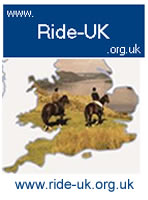
Horseytalk.net/Hoofbeat EXCLUSIVE
RIGHTS OF WAY WATCH
Protecting Riders Rights
How to stop the continual fencing of open commons and heathlands
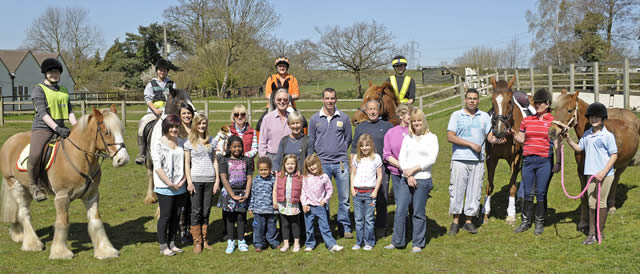
Residents of Odiham Common explain how they did it
There are many heroes in the non stop fight against the continual fencing of open commons and heathlands which either severely hinder riders from enjoying their riding or stop them altogether.
Odiham Common has a set of residents who can inspire us all.
For they are the only people in the country who have successfully run a campaign which resulted in a local authority being ordered to pull down fencing they had previously erected that stopped riders from riding on land that had been ridden on for generations.
It all began in 1992. English Nature, the Government’s environment watchdog and invariably the driving force behind these schemes, slapped an order on Odiham Common making it a Site of Special Scientific Interest. The common extended to 300 acres from the banks of the Basingstoke Canal in Hampshire. It is a mosaic of habitats and includes Odiham Wood that provides a natural and attractive woodland.
The SSSI was English Nature’s way of telling the small local authority, Hart District Council ‘Odiham Common is now a SSSI. It has got to be managed in a way that we approve. Give us your management plan.’
Management plans, as far as English Nature is concerned, means one thing: grazing. Grazing means cattle. Cattle means fencing. And in the case of Odiham Common it meant a huge tree felling operation. English Nature wanted to fence the whole of Odiham Common.
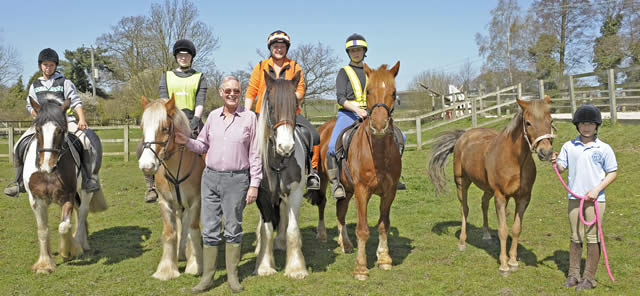 Those
who loved the common – local residents, people living on the common,
people not living on the common, riders, non riders, walkers and dog
walkers – swung into action.. The Odiham Common Preservation Society
was created and along with the Potbridge Residents Association it communicated
with all those opposed to the plan. The associations explained what was
afoot to the local community, established their views and lobbied everyone
to get across the community views.
Those
who loved the common – local residents, people living on the common,
people not living on the common, riders, non riders, walkers and dog
walkers – swung into action.. The Odiham Common Preservation Society
was created and along with the Potbridge Residents Association it communicated
with all those opposed to the plan. The associations explained what was
afoot to the local community, established their views and lobbied everyone
to get across the community views.
 The
proposal, they argued, was too drastic. The time-scale, they were proposing,
was too short. The plan to fence the Common was driven by money – the
10 year Country Stewardship grant that came as part of the English Nature ‘solution’ -
not by the needs of the environment. The whole idea was totally out of
sympathy with the surrounding area. Residents would be denied access
to open common land.
The
proposal, they argued, was too drastic. The time-scale, they were proposing,
was too short. The plan to fence the Common was driven by money – the
10 year Country Stewardship grant that came as part of the English Nature ‘solution’ -
not by the needs of the environment. The whole idea was totally out of
sympathy with the surrounding area. Residents would be denied access
to open common land.
So strong and so persistent was their opposition that in the end Hart District Council decided that instead of asking the Government for permission to fence the whole Common, they would only ask permission to fence one-part of the Common, admittedly it was 200 acres of the woodland area, the largest part of the Common. But it was a concession. The Council also decided to only ask for permission to fence the area for an experimental period of five-years to demonstrate to the local people that their plan would work. After five-years, they would have to ask the Government again for permission to let the fencing remain.
The proposal went to a Public Inquiry
In spite of no less than 160 different protests against the plan, the protesters lost.
The Government gave permission for 200 acres of the Common to be fenced, for cattle to be introduced on to the land and for trees to be felled to accommodate the cattle.
“It was half a victory. We had saved some of the common and lived to fight another day” says Stuart Royston.
In 2002, the five-years was up. Another application was made to the Secretary of State not only to re-new permission for the 200 acres on the common to remain fenced but to extend fencing to the remaining 100 acres.
 During
the five year experimental period the two associations had been active
in monitoring all that was happening on the common, attending regular
meetings at the Local Authority, keeping the community informed, and
learning as much as possible about the legal and conservation issues
on the common.
During
the five year experimental period the two associations had been active
in monitoring all that was happening on the common, attending regular
meetings at the Local Authority, keeping the community informed, and
learning as much as possible about the legal and conservation issues
on the common.
The local residents argued that the Secretary of State should not consider the application because the Scheme of Regulation that governed the common did not permit fencing. After taking counsel’s opinion DEFRA decided the Secretary of State could consider the application but if the application was approved no fencing would be possible unless the Scheme of Regulation allowed it. Thus a second Public Inquiry was held.
They also questioned the so-called success of the fencing operation. Instead of improving the common it had only made it worse.
What’s more, they said, after five-years of grazing and fencing there were no environmental benefits to the Common whatsoever. . The fencing was still visually intrusive. It still prevented people’s access to the Common. Internal fencing that had been erected within the fenced area was illegal. And, of course, the original fencing was still illegal in the first place.
Again those living in and around the Common objected to the application and turned up to the Public Inquiry to have their say.
English Nature argued that grazing was essential for the environment and claimed the 5 year experimental period showed that there were environmental benefits from grazing. However under cross examination at the Public Inquiry neither they, nor the district council witnesses, nor the two consultants were able to substantiate their claims. Neither could they substantiate their claims that tree felling had been minimised when it was shown they had felled 80 year old oak trees and areas that under the original plan should not have been felled until year 7.
The result: English Nature lost and the local residents won.
Within four weeks, Hart District Council were forced to start dismantling the fencing.
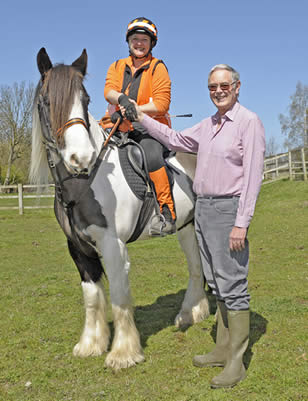 Says
Stuart Royston, “There were big celebrations. For the first time
we had proved that when it came to fencing common land it was possible
to successfully oppose a local council, Natural England, Countryside
Stewardship and win.”
Says
Stuart Royston, “There were big celebrations. For the first time
we had proved that when it came to fencing common land it was possible
to successfully oppose a local council, Natural England, Countryside
Stewardship and win.”
But what happened two-years later?
You’ll never guess.
For the third time Hart District Council under pressure from Natural England tried to resurrect their plans for Odiham Common. There was talk of Working Parties, management plans and, would you believe it, grazing solutions. At the very first meeting Natural England re-introduced the idea of grazing. After another two years of meetings that got nowhere the local residents, as they say, went bananas and the working party disbanded in acrimony.
The latest attempt by so called ‘conservationists’ started in 2009 under the guise of another attempt to produce a management plan using the common purpose methodology. Surprise, surprise the consultation did not reveal a consensus for grazing and consultants continue to work up an acceptable plan. As the new Government looks for cuts in public expenditure, there are some obvious places ripe for pruning and we would all be pleased to get this one size fits all mentality about grazing and fencing off the agenda.
How to win
Essential points for Success
- Make sure all the community is engaged. This means a lot of work communicating with the community to ensure they understand the issue, the proposals and their implications; ensuring you understand the community views so that you can express them; keeping the community up to date and feeling engaged.
- Maximise local expertise, knowledge, and brains; and enlist the support of the best possible outside advice that you can afford or can enlist. Do your homework thoroughly so that you know everything.
- Remember you are fighting the ‘establishment’. Be prepared for a long hard slog. There is never a quick and easy solution. Understand your opponents and their motivation.
- Engage with your opponents; talk with them; argue your case and point out the error of theirs.
- Focus on key decision points - the process of decision taking and the criteria. Discussion is one thing. Decisions are what counts. At decision making time make certain you focus your arguments on the decision points and the criteria; do not be distracted. Miss the decision points and you miss everything.
- Never give in. Do not be intimidated by thinking they have more resources than you. Often the reverse is true. Their resources are stretched, your site is unlikely to be the most important issue for them – but it is for you; and you know much more than say Natural England about your local situation.
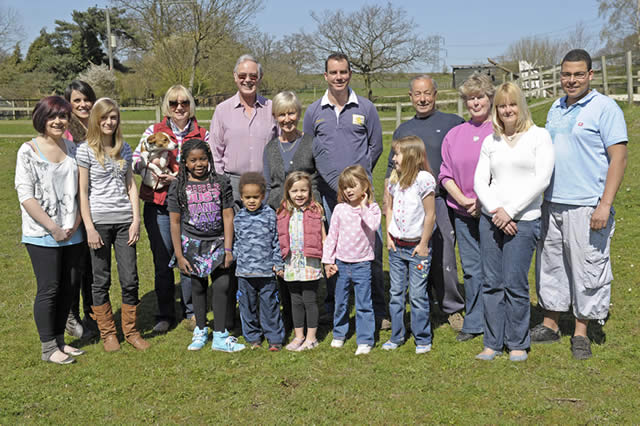
SEND YOUR VIEWS AND COMMENTS TO US HERE













